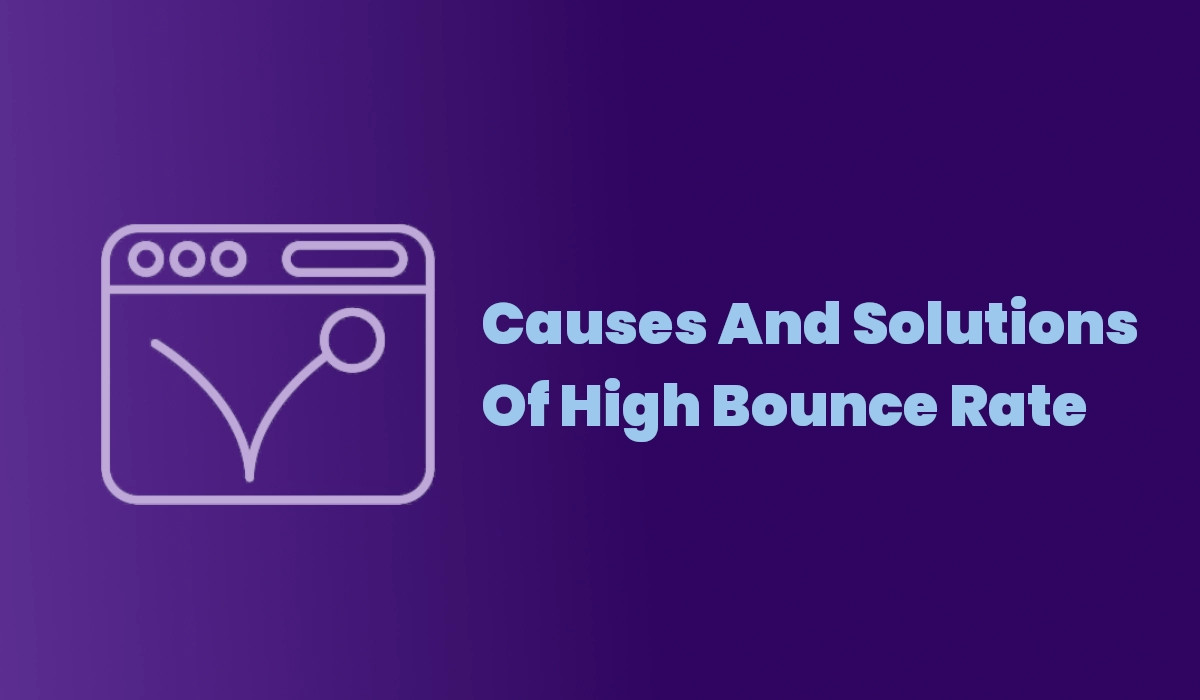Why Is My Bounce Rate So High? Causes and Solutions
John / 21 Oct 2023
In this article, we will explore the reasons why your website may have a high bounce rate and ways in which you can reduce it.
Understanding Bounce Rate
Historically, bounce rate has been defined as the percentage of visitors who leave a website after viewing only one page. Any visit/session that ends without the user navigating to and interacting with any other page on the same site is commonly referred to as a bounce.
The calculation involves dividing the number of single-page sessions by the total number of sessions, multiplied by 100.
In Google Analytics 4 (GA4), the current version which replaces UA, the definition of bounce rate is a bit different. The bounce rate refers to the percentage of sessions that were not engaged.
An engaged session refers to a visit that lasts longer than 10 seconds, triggers a conversion event, or includes at least a second pageview or screenview. If a session doesn't meet any of the three conditions, it counts as a not-engaged or bounced session.
In GA4, the calculation of bounce rate involves dividing the non-engaged sessions by the total number of sessions, multiplied by 100.
The bounce rate is the opposite of the engagement rate since the engagement rate refers to the percentage of engaged sessions. Therefore, it can also be calculated as "100% − engagement rate".
What's a Normal Bounce Rate?
Bounce rate is an important metric as it gives insights into how engaging your website is and how well it is meeting the needs of your visitors.
The "normal" bounce rate can vary depending on your industry, website type, and specific goals. For example, blogs typically have higher bounce rates than e-commerce websites. However, a general rule of thumb is that a bounce rate of 40% or lower is considered good, while a bounce rate of 55% or higher is considered high.
A high bounce rate indicates that visitors are not finding what they expected or encountering a poor user experience on your site.
On the other hand, a lower bounce rate is desirable and often leads to higher conversion rates, as visitors are more likely to engage, make purchases, or take the desired actions on your site.
Causes of a High Bounce Rate
There are a number of possible reasons why a website's bounce rate may be too high, including:
- Slow page loading times: Visitors are increasingly becoming impatient and are more likely to leave a website if it takes longer than a few seconds to load.
- Poor website design: If your website is cluttered, unattractive, or difficult to navigate or find the information, visitors are more likely to leave immediately.
- Poor quality content: Content that is not relevant, informative, or engaging is more likely to lead to a higher bounce rate.
- Mismatched expectations: Visitors expect content that matches their search intent. If they don't find what they were looking for, they'll bounce.
- Unclear call to action: If your website lacks clear and compelling calls to action, visitors won't know what to do next and will likely leave your website.
- Pop-ups and intrusive ads: Excessive pop-ups and aggressive advertising can deter visitors from engaging with your site.
- Technical issues: Technical issues such as broken links or 404 errors can also lead to a higher bounce rate.
- Lack of mobile optimization: With a growing number of users on mobile devices, a non-responsive website can cause high bounce rates.
How to Reduce Bounce Rate on a Website
There are a number of things you can do to reduce the bounce rate on your website, including:
- Improve your page loading times: Improve your page loading times by compressing your images, minifying your code, enabling browser caching, and using a content delivery network (CDN). You can test your website speed using PageSpeed Insights.
- Improve your website design: Make sure your website design is clutter-free, visually appealing, and easy to navigate.
- Improve the quality of your content: Understand your target audience and create content that is relevant, informative, and engaging for them.
- Set clear expectations: Use clear and concise titles, meta descriptions, headlines, and subheadings to let visitors know what they can expect to find on each page of your website.
- Use clear calls to action: Use persuasive and clear CTAs to guide visitors into what action you want them to take next on each page of your website.
- Use internal linking: In addition to the navigation menu, add contextual internal links to direct visitors to other relevant pages on your website.
- Limit the number of pop-ups: If you must, use pop-ups sparingly and ensure they are not overly intrusive.
- Fix any technical issues: Regularly test your pages to ensure there are no errors and all your links are working properly on your website.
- A/B testing: Experiment with different elements on your pages to see what resonates with your audience and keeps them engaged.
- Create a compelling value proposition: Make it clear why visitors should stay and explore your site.
- Use heatmaps to see how visitors are interacting with your website: Heatmaps are visual representations of how visitors are interacting with your website. They can show you where visitors are clicking, scrolling, and leaving your website. You can install Microsoft Clarity and observe heatmaps to identify areas of your website that need improvement to reduce bounce rate.
Conclusion
A high bounce rate is a red flag that something may be amiss with your website. By understanding the causes and implementing effective strategies to reduce it, you can enhance user experience, boost conversions, and improve your website's overall performance.
Remember, while a low bounce rate is essential, it's equally important to focus on providing valuable content and experiences that keep visitors coming back for more.
